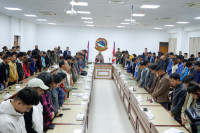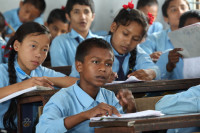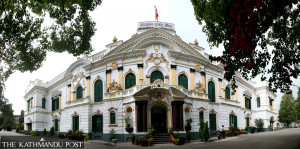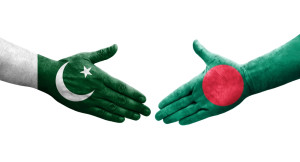Columns
Nepal’s geothermal potential
The country can position natural hot springs to play a meaningful role in its energy future.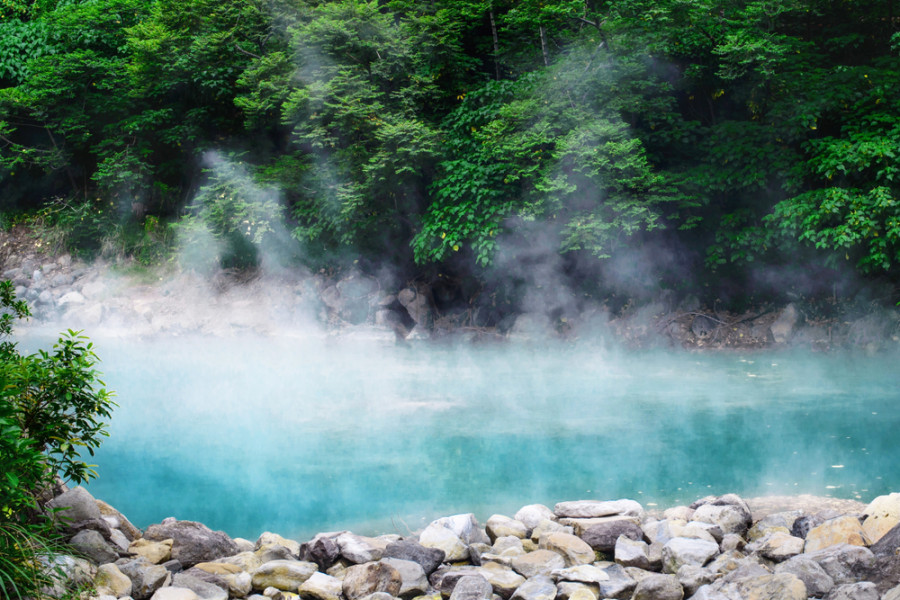
Anwit Pokharel
Nepal’s hot water springs have great potential as a renewable geothermal energy source that generates low levels of greenhouse gases. While hydropower generation can fluctuate with seasonal water availability and solar power depends on weather conditions, geothermal resources provide stable baseload power throughout the year.
Additionally—without entirely shifting focus to large hydropower projects, which cause significant ecological disruption—or to hydrogen systems, which, although promising as energy carriers, are not yet viable at a large scale—Nepal must parallelly prioritise revitalising hot springs in remote, economically disadvantaged regions. The local communities in such areas can benefit from improved energy access and associated tourism development, creating a model similar to successful implementations in countries like Japan and Iceland.
Assessment of geothermal resources
The Water and Energy Commission Secretariat (WECS) study on identifying and developing hot springs recognised 41 sites meeting threshold parameters (discharge and temperature), which is noteworthy for geothermal energy development. According to the study, Nepal can anticipate that a hot spring with water temperature of 70 degrees Celsius and flow rate of one litre per second would theoretically yield approximately 188.37 kilowatts of electrical power at perfect efficiency. However, practical applications would achieve lower outputs.
An example of Tatopani Bazar in Sindhupalchok district can be taken from the various hot springs assessed. Nepal can direct resources toward developing this spring, which stands out with its recorded temperature of 51.6 degrees Celsius and an estimated power potential of 376 kilowatts. The study estimates an investment cost of approximately Rs86 million for developing this site. Besides, Nepal can adopt a dual-purpose approach to Tatopani, which has long been recognised as an eminent location for Balneotherapy (a type of hydrotherapy). This site can be developed to serve both wellness tourism and energy production simultaneously, creating a sustainable economic model for the region.
Technological implementation
Nepal can utilise existing natural hot springs rather than investing in traditional geothermal plants that require drilling deep into the Earth’s crust, which reduces initial exploration costs.
The WECS report suggests Nepal can generate electricity by introducing cold water to these hot spring sources, creating a temperature difference that could be converted into electrical power using binary cycle technology, a system already proven effective in similar geological settings worldwide. The binary cycle technology proposed in the study can transfer heat from geothermal water to a secondary fluid with a lower boiling point, which vaporises and drives a turbine to generate electricity. This technology is particularly suitable for moderate-temperature resources like those found in Nepal.
The conversion efficiency of such systems can be expected to be in the range typically between 30-50 percent in real-world applications, according to international benchmarks cited in the WECS report. This means the estimated 376 kW potential of Tatopani Bazar would likely translate to approximately 150-188 kW of actual generation capacity; enough to power several hundred rural households with light bulbs and operate small electronics. Considering the present scenario, one kW hydropower typically powers four-five households in rural areas, which implies that a geothermal plant of 180kW capacity could power roughly 750 rural households.
Learning from global applications
Nepal can draw valuable lessons from countries successfully utilising mature geothermal energy. In Iceland’s capital, Reykjavik, an extensive geothermal district heating network keeps homes warm throughout harsh winters. This system heats 90 percent of the buildings in Reykjavik. Similarly, Italy’s historic Larderello region and New Zealand’s Wairakei geothermal field station demonstrate successful electricity generation from geothermal resources.
Nepal can perhaps adopt approaches similar to Japan, which shares geological similarities and has developed an integrated model where geothermal resources simultaneously support electricity generation, district heating systems and onsen (hot spring) tourism. Beyond electricity, Nepal can apply geothermal energy to support year-round greenhouse cultivation, accelerate fish growth in aquaculture and power industrial processes like food dehydration and milk pasteurisation.
Agricultural applications can be particularly valuable for Nepal. The country can utilise geothermal energy for greenhouse heating during winter to extend growing seasons for high-value crops and improve food security in remote mountainous regions where conventional heating methods are costly or unavailable.
Addressing development challenges
Currently, the cost of electricity generated from geothermal hot springs is significantly higher than that of Nepal’s established hydropower projects, posing a barrier to immediate large-scale adoption. However, a comprehensive long-term cost-benefit analysis could justify the initial investment when compared to conventional alternatives. Addressing the gap in specialised technical expertise will be crucial. This can be achieved through international partnerships and targeted capacity-building efforts.
Given the complexity of binary cycle systems, Nepal should invest in training programmes and pursue technology transfer initiatives to build the necessary engineering knowledge for successful project implementation. Detailed feasibility studies should be conducted at the most promising sites identified in the WECS report. The methodology developed in the WECS study can serve as a national template for future exploration and evaluation of potential geothermal resources.
Establishing standardised protocols for measurement, analysis and feasibility studies will ensure consistency as the sector evolves. Sharing this data with local governments can foster tourism-related development while enabling effective resource monitoring. Therefore, as global focus on clean energy intensifies and technology advances, Nepal can position its natural hot springs to play a meaningful role in its energy future, offering a sustainable complement to traditional sources in the country’s pursuit of energy independence and environmental sustainability.




 17.12°C Kathmandu
17.12°C Kathmandu
